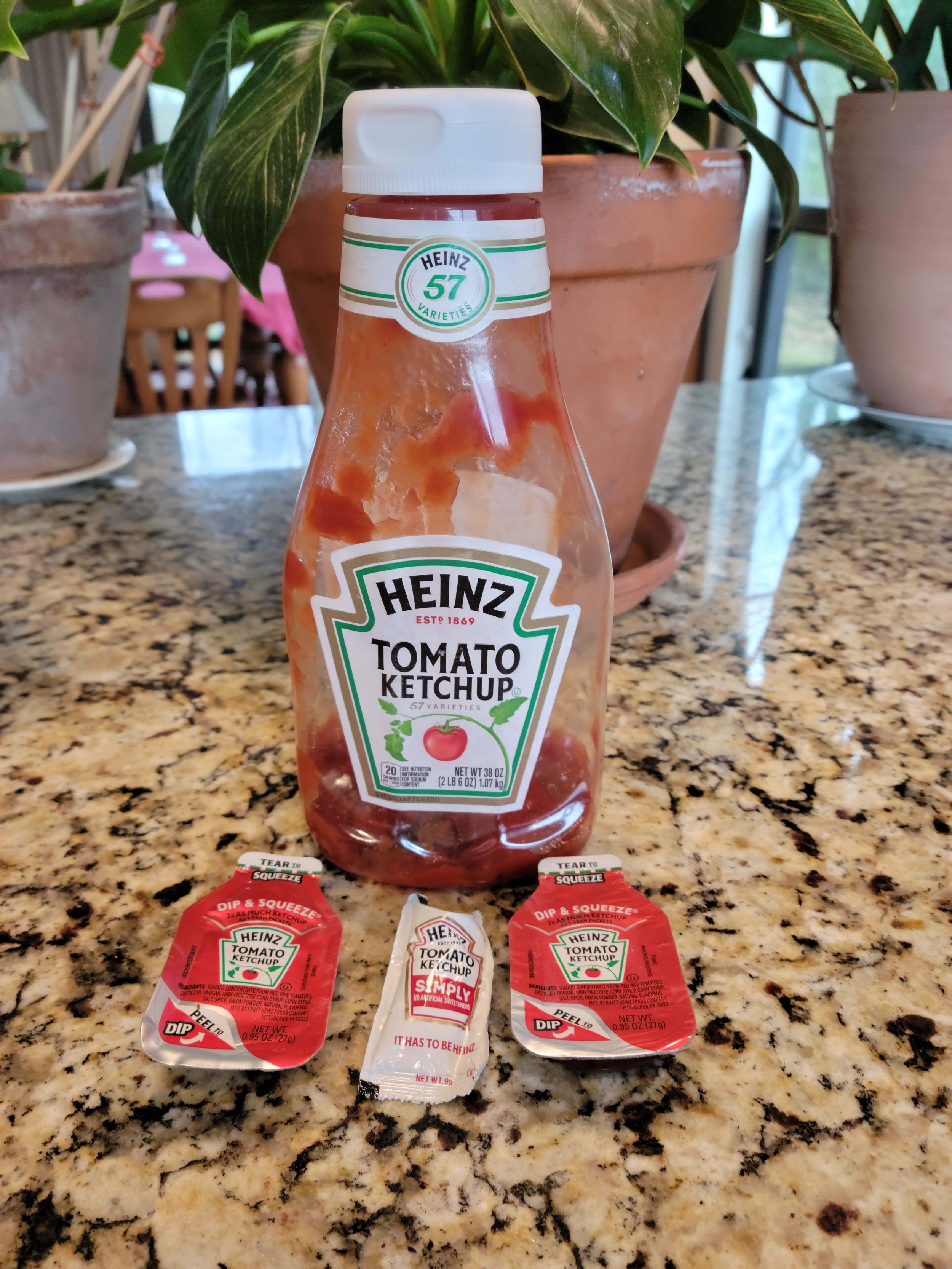27 April 2022
We know ketchup, or catsup, as a thick sauce made from tomatoes, vinegar, sugar, and other spices. The name comes to us from Chinese and Malay, which is surprising as tomatoes, the main ingredient, originated in the Americas. In Hokkien, a dialect of southeastern China and Taiwan, kôe-chiap is a fish-based sauce, kôe (fish) + chiap (sauce), and the Malay kecap is a type of soy sauce.
The name of the condiment made its way to Europe via the usual trade routes in the seventeenth century, and it is recorded in English by 1682. And ketchup, with various spellings, became the name for a variety of sauces. From a pamphlet published that year titled The Natural History of Coffee, Thee, Chocolate, Tobacco in a section extolling the virtues of chocolate:
And Adam is commanded in Paradise to Encrease and Multiply, therefore I hope this little excursion is pardonable, being so adequate to this Treatise of Chocolate; which if Rachel had known, she would not have purchas’d Mandrakes for Jacob. If the Amorous and Martial Turk should ever taste it, he would despise his Opium. If the Grecians and Arabians had ever try’d it, they would have thrown away their Wake-Robins, and their Cuckow-Pintles; and I do not doubt, but you London Gentlemen, do value it above all your Cullises and Jellies, your Anchoves, Bononia Sawsages, your Cock, or Lamb-stones, your Soys, your Ketchups and Caveares, your Cantharides, and your Whites of Eggs, are not to be compared to our rude Indian; therefore you must be very courteous and favourable to this little Pamphlet, who tells you most faithful Observations.
And the following year, a cookbook titled The Young Cooks Monitor mentions ketchup as an ingredient in a number of recipes. Here is one:
To Stew Pidgeons.
Split them in halves, then lay them in a deep Pewter-dish, and put to them an equal quantity of Wine and Water, as much as will keep them from burning, the seasoning must be a little Cloves and Mace, a few corns of whole Pepper, and a little Salt, and when they are Stewed enough, beat up a little butter thick in the Liquor they were Stewed in, and serve them to the Table, if you have any Ketchup you may put in half a score drops.
And the 1699 slang dictionary New Dictionary of the Canting Crew has this entry:
Catchup, a high East-India Sauce.
The fact that the Natural History pamphlet and the Young Cooks Monitor don’t bother to explain what ketchup is indicates that the sauce was already familiar by the end of the seventeenth century, but it was evidently not all that familiar because the 1699 Canting Crew dictionary did feel the need to define it. Furthermore, the use of the plural ketchups in the Natural History pamphlet indicates that there were a variety of different sauces using that name. These early ketchups were not the tomato-based concoction that we’re familiar with today, and various ketchups using mushrooms, walnuts, oysters, and anchovies as the main ingredient are recorded in the seventeenth and eighteenth centuries.
We don’t see references to tomato ketchup until the turn of the nineteenth century. There is this advertisement that appeared in the Boston Gazette on 4 December 1800:
Bohea, Souchong, and Hyson TEAS;
Tomata [sic] Ketchup, in bottles, from the West Indies:
Coffee, white and brown Sugars; [for family use;
Excellent Tamarinds, in pots and kegs, in small quantities
English Mustard, in bottles; Figs, Raisins and Grapes, with
a variety of other articles in the Grocery line.
By the end of the nineteenth century, tomato ketchup had become the primary form of ketchup in the English-speaking world. Many of those other sauces still exist, only under different names.
Catsup is simply an alternative spelling and does not indicate a substantive distinction. Catsup is more commonly found in North America than elsewhere, but even there ketchup is the dominant spelling.
Sources:
“Rappee and Macouba Snuff,” (advertisement). Boston Gazette, 4 December 1800, 4. Readex: America’s Historical Newspapers.
B.E. A New Dictionary of the Canting Crew. London: W. Hawes, P. Gilbourne, and W. Davis, 1699, s.v. catchup, n. Early English Books Online.
M.H. The Young Cooks Monitor. London: William Downing, 1683, 67–68. Early English Books Online.
The Natural History of Coffee, Thee, Chocolate, Tobacco. London: Christopher Wilkinson, 1682. 18. Biodiversity Heritage Library.
Oxford English Dictionary, third edition, January 2018, s.v. ketchup, n., catsup, n., tomato, n. and adj.
Photo credit: David Wilton, 2022. Licensable under a licensed under a Creative Commons Attribution-NonCommercial-ShareAlike 4.0 International License.

